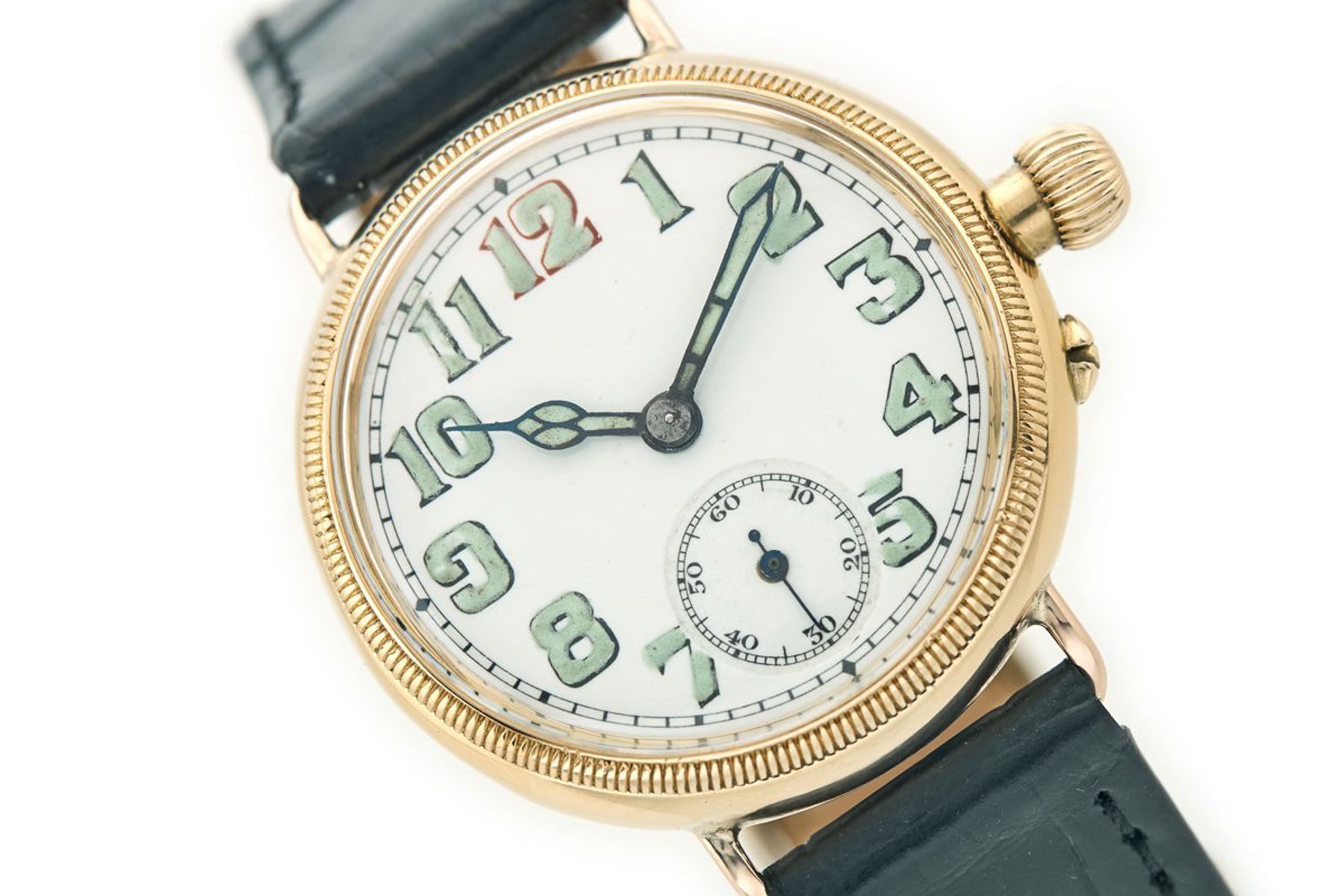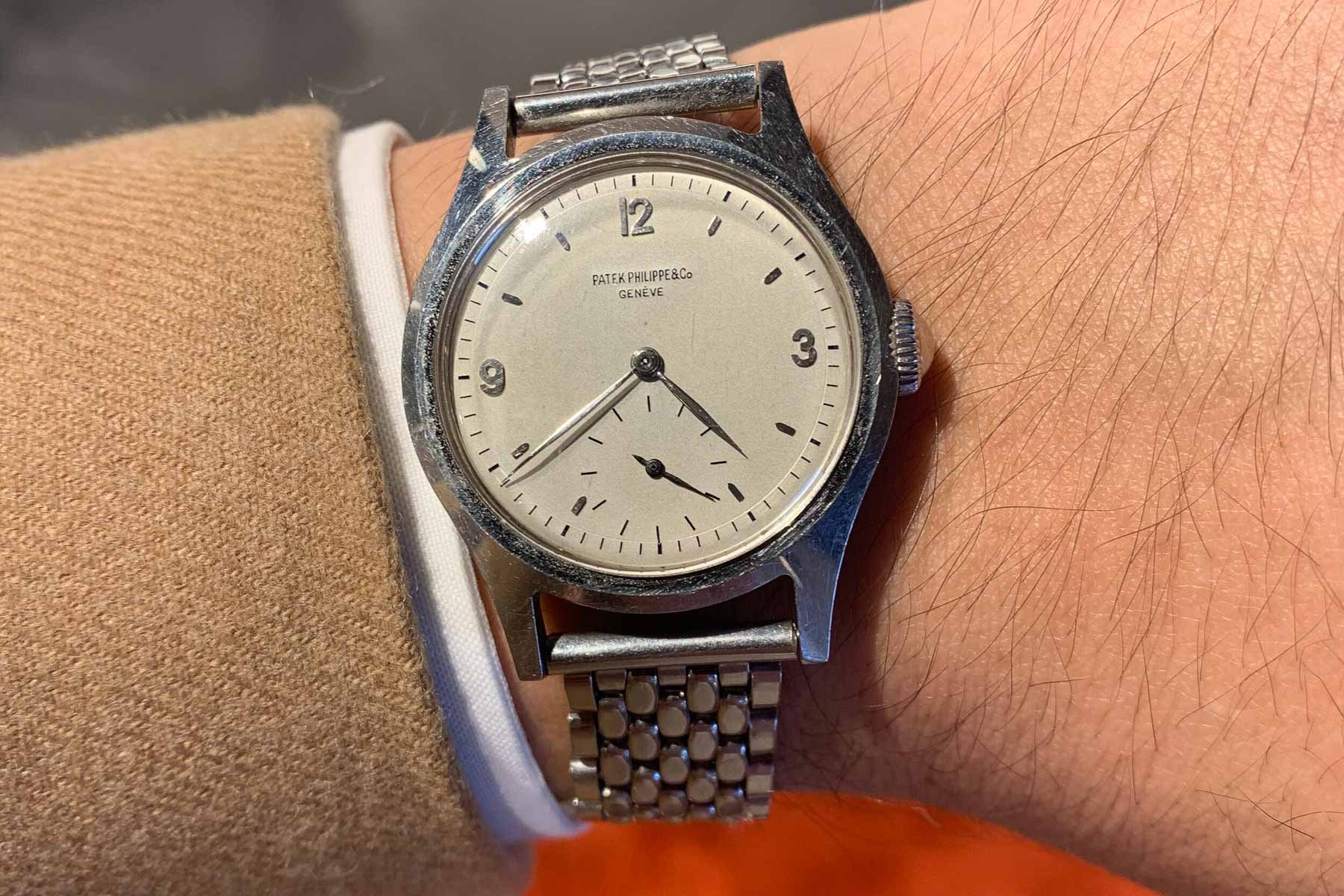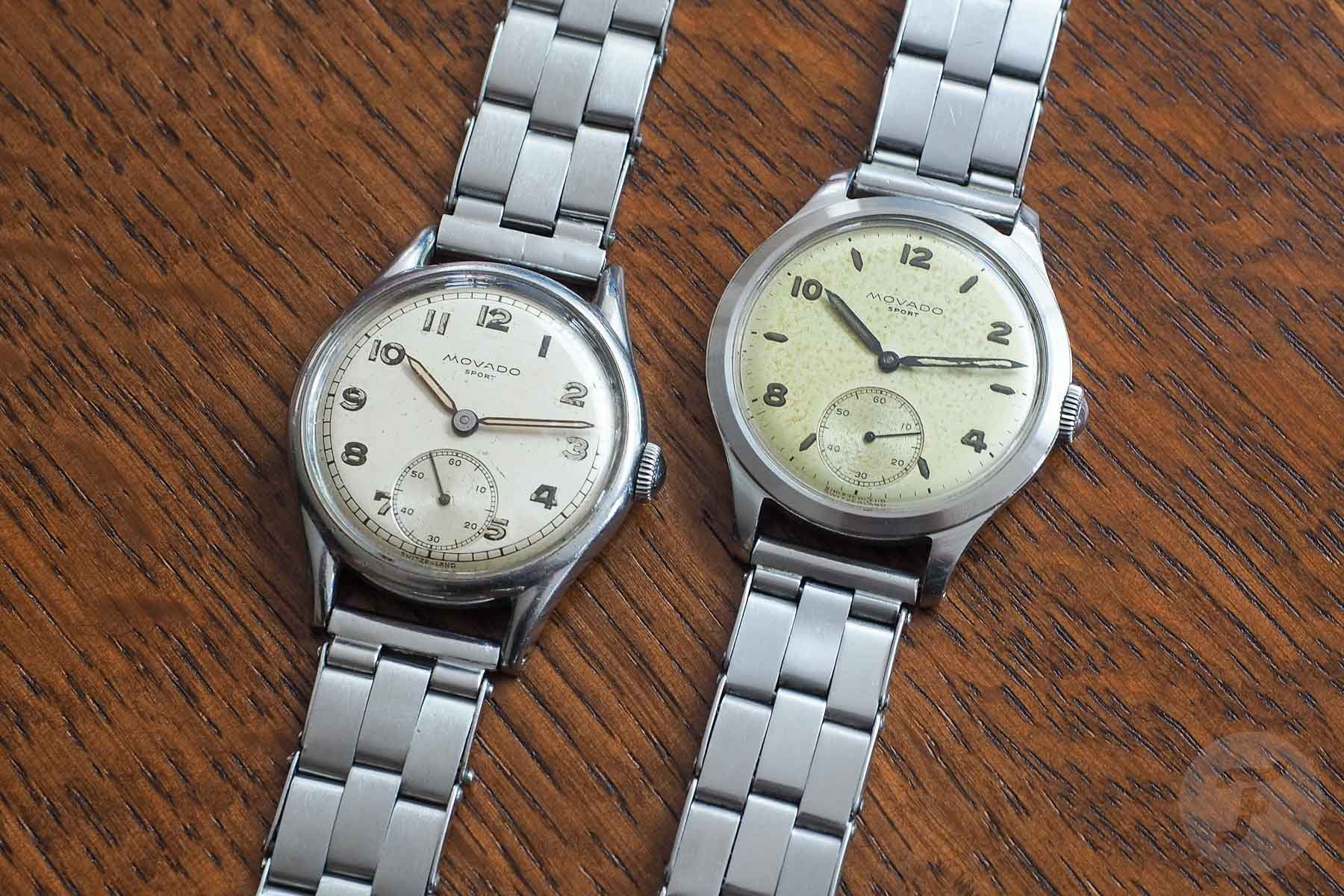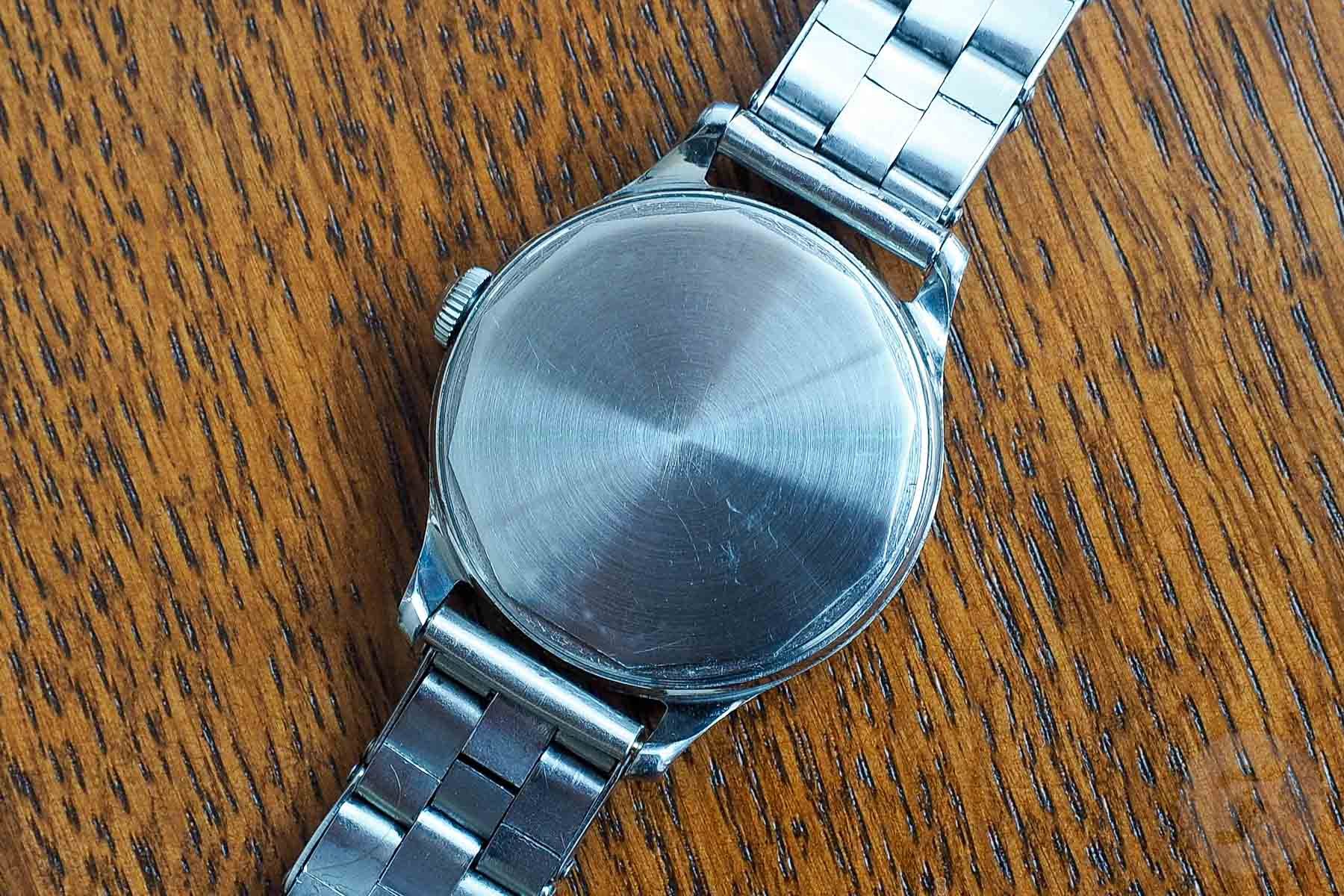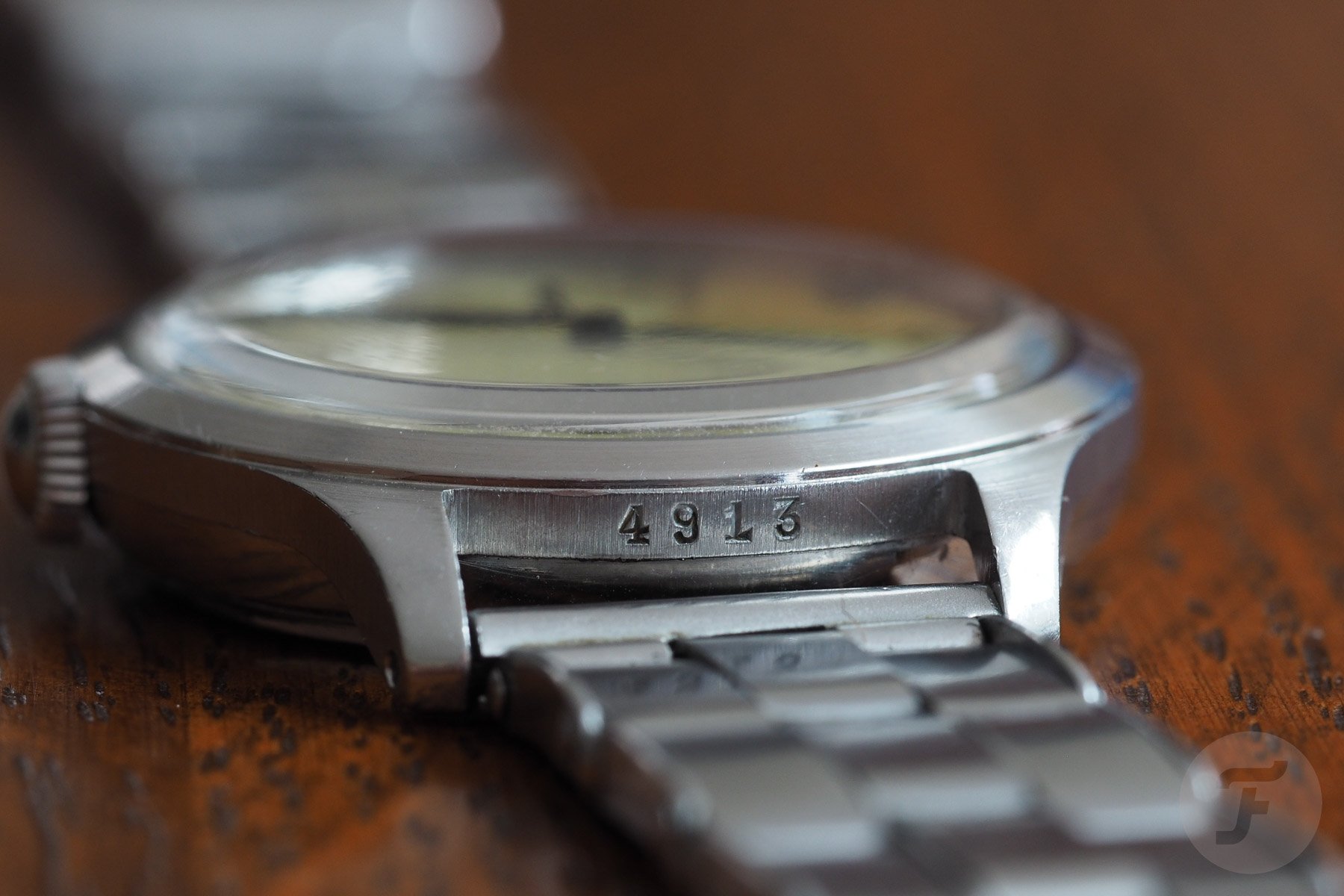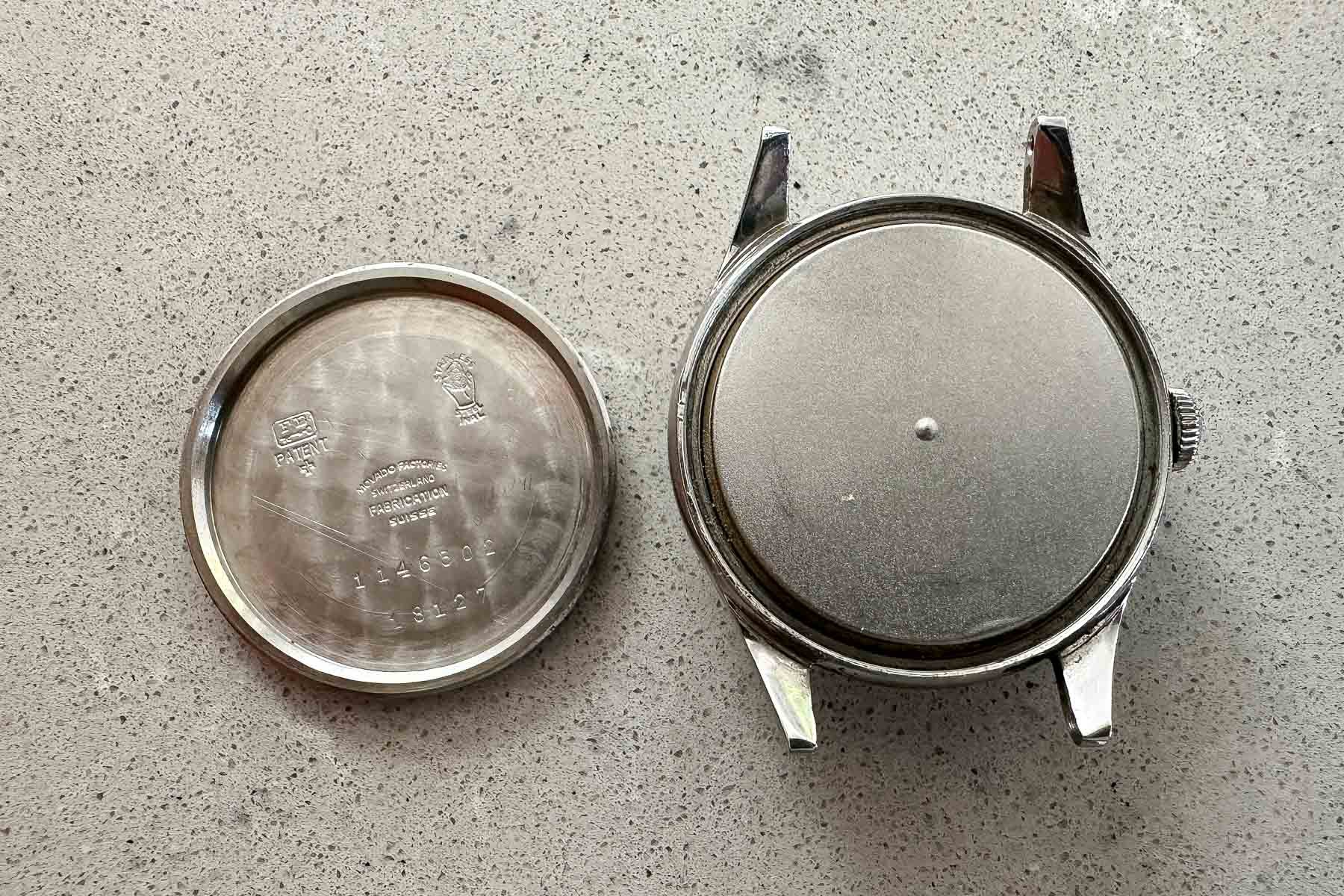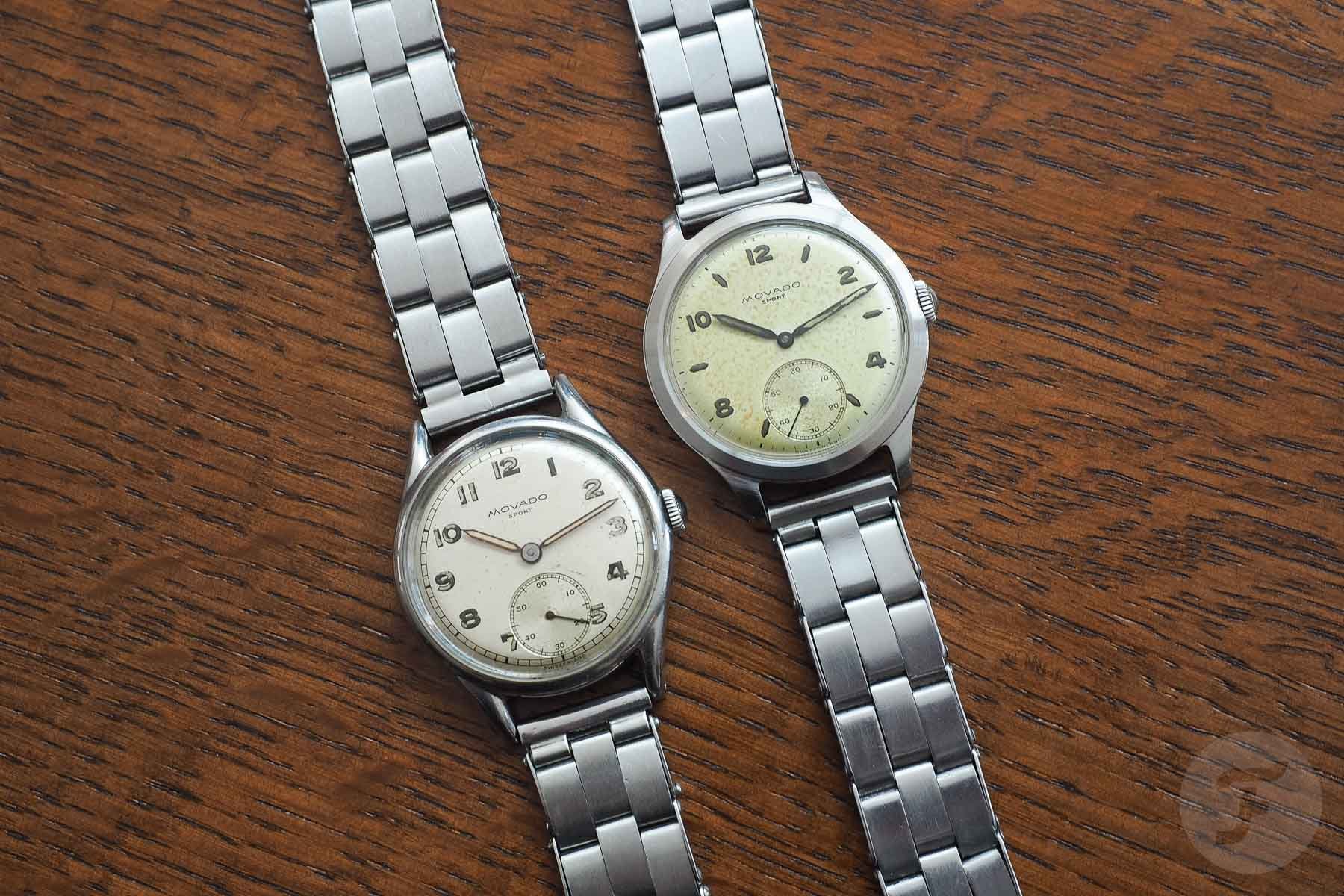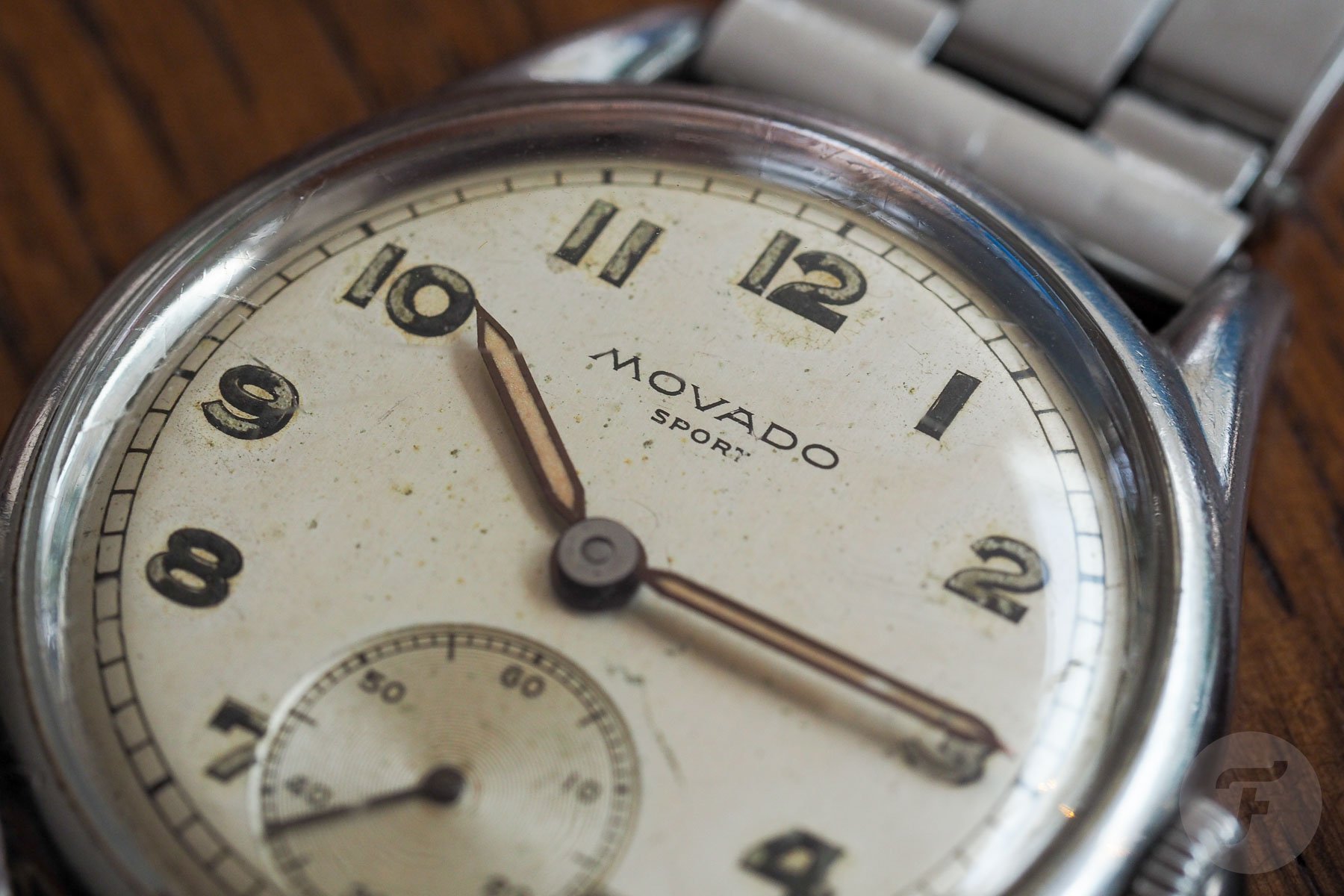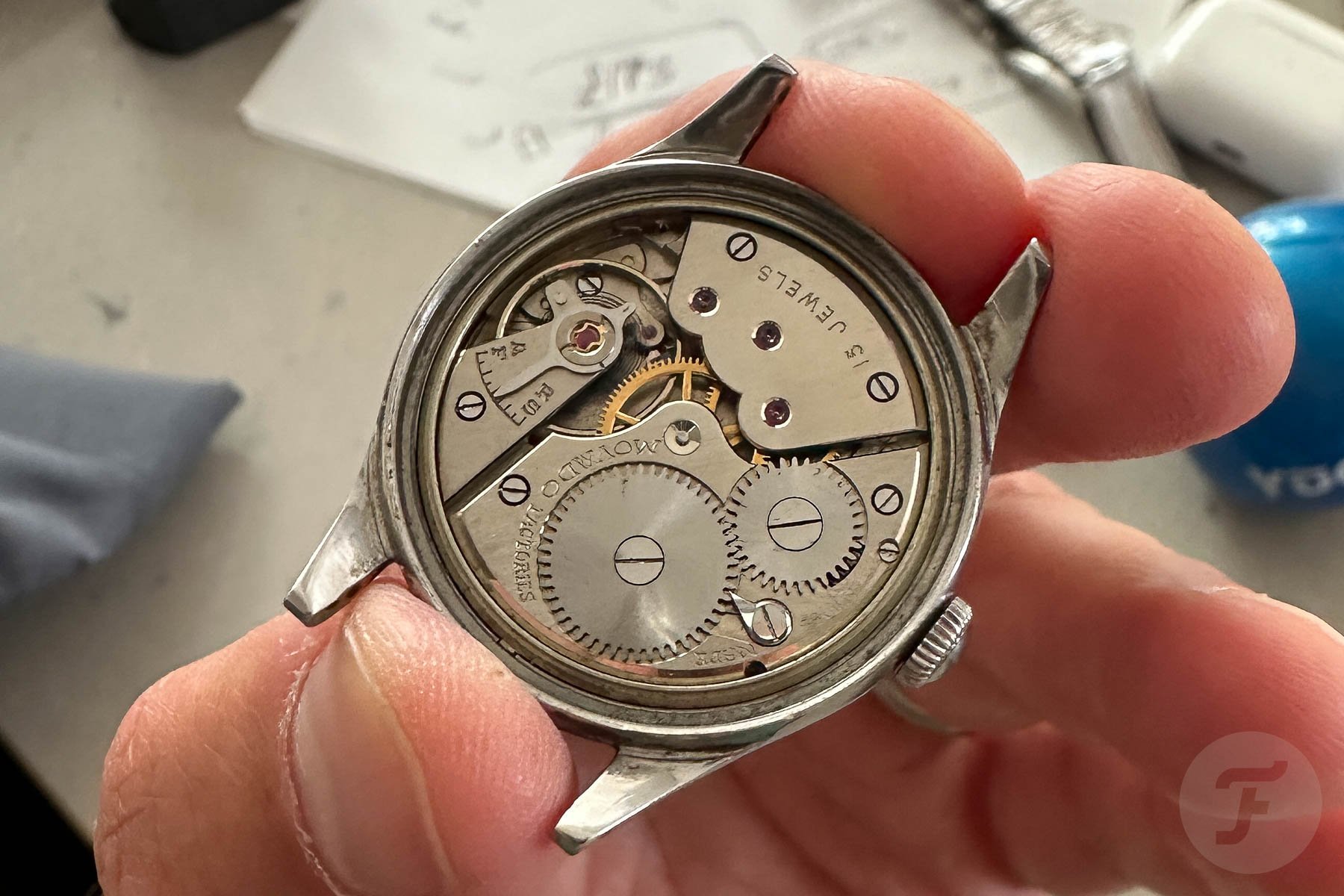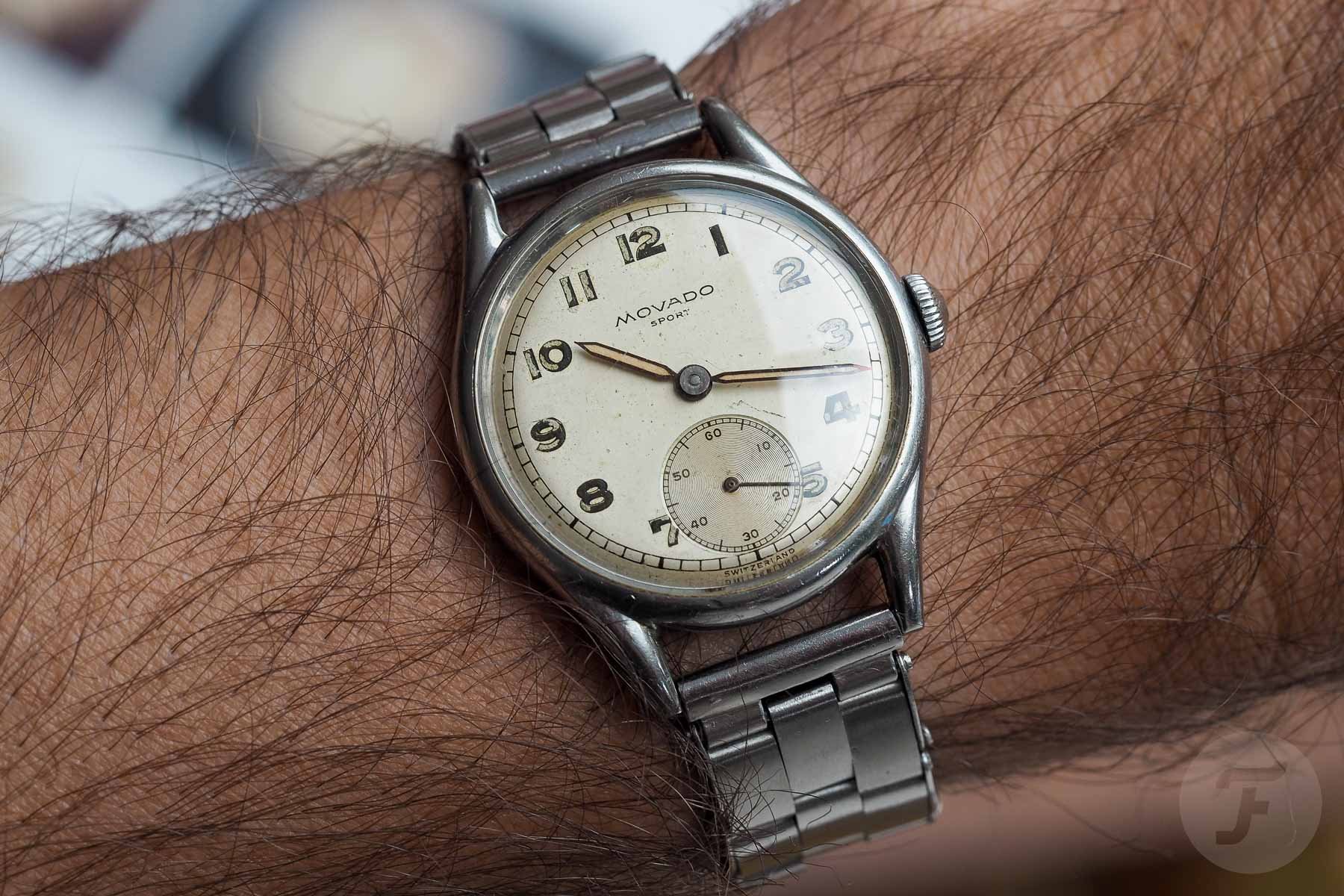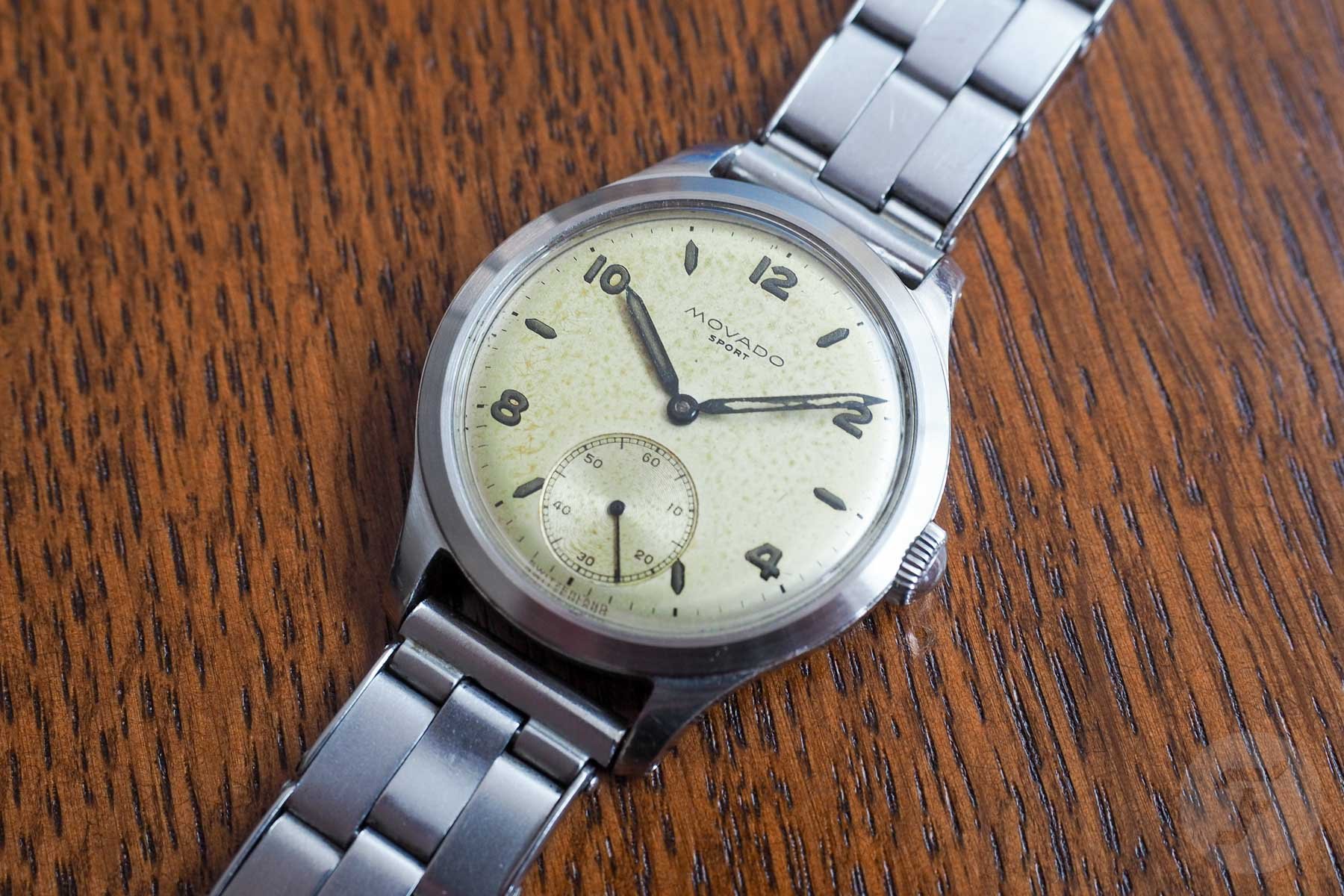Vintage Watches: A Pair Of Movado Sport Models With Borgel Cases
I have handled a lot of watches over the past 30 years. To my knowledge, though, I had never held a Borgel-cased watch until sometime last year. Now I own two Borgel pieces, and they’re worth sharing. Both are Movado Sport models from the ’50s and are lovely regardless of the case maker.
My interest in watches from the ’30s through the ’50s continues to uncover fantastic gems. While pieces from the following decades often have case, movement, and dial makers associated with them, case makers feature prominently on earlier watches. Why is that? I think there are several reasons. Tariffs on precious metals meant that local-market case makers were more prevalent. Also, wristwatches were still in their infancy, and many famed makers were transitioning away from producing cases for pocket watches. Finally, innovation was afoot with a firm like François Borgel leading the charge into water resistance as a competitor to Rolex.
François Borgel — A brief history
I’ll refer you to this insightful article by A Collected Man on the history of François Borgel but will provide a brief recap. The company was formed in Switzerland during the late 1800s. In 1891, the firm filed a patent for the first water- and dust-proof pocket watch. Unlike today, which sees gaskets and threaded parts working in tandem, this invention used precise tolerances and a series of screwed-in case components to provide protection. Military engagements often offer a testbed for such innovations, and Borgel supplied pocket- and trench-watch cases to many brands during WW1. Interestingly, the bezels on these watches were used to screw the components into the watch case and look a lot like the ridged case back of a Rolex.
Early waterproof cases
During the ’20s, Rolex debuted its Oyster case after employing Borgel cases on some of its earliest models. Borgel, acquired by Taubert & Fils during this time, continued to innovate and released its decagonal-cased watches sometime soon after. These watches featured a similarly shaped case back that requires a special tool for opening and closing. Mido was an early adopter of these cases, and while they tend to be small (less than 30mm), they’re sturdy, cool watches.
The decagonal case back lived on for the next several decades, and we see Borgel cases used for watches from many brands. Famously, Patek Philippe used them on the sublime Calatrava reference 565 and Chronograph reference 1463. Doxa, West End Watches, and Movado were just a few others using these lovely cases. Some models were even similar in design to the Patek pieces and now command serious sums. Telltale signs of a Borgel case, aside from the protected case back design, are the domed and ridged crown. Also, the inner case backs contain either “BRIT PAT” or “FB” text and an engraving of a small key. Durability was the foremost priority, but it wasn’t the brand’s sole focus. Expect a beautifully crafted case if you end up purchasing one.
Two Movado Sport models
Movado deserves recognition as one of the great watch brands of the first half of the 20th century. The company created movements and a plethora of arresting designs. A peek inside a Movado from the ’50s typically reveals an attractive in-house caliber with decent finishing and high-end touches, including jewels set within chatons. Movado also used Borgel cases en masse. The Movado Sport models in this article come from the same era and display two distinct case styles.
Clues about the history of these watches
It’s worth mentioning that Movado’s history is not as thoroughly documented as many of us would like. The Movado History by Fritz von Osterhausen is the reigning reference, and while it’s helpful, there are extreme gaps in information. Namely, we’re used to receiving clear records from brands like Omega, Longines, or Patek Philippe. This archival service does not exist with Movado, and that’s a shame because there are countless beautiful references. Movado supposedly has archives in its New Jersey office, but these are not public. Therefore, we need to work with what we have.
The Borgel cases of these vintage Movados contain clues that allude to the originality of a given watch. For example, four numbers are engraved between the top lugs on the mid-case. Unscrewing the case back reveals a dust cap over the movement, a quality touch.
The underside of the case back has two sets of engraved numbers, the Movado signature, verbiage stating its Swiss make, and the Borgel logo. The top row of seven digits is the serial number, and the last four digits should match those on the outside of the mid-case. This means that the case and case back were “born” together, and that’s a vote of confidence in favor of the watch’s originality. The lower five-digit code provides additional intelligence. The first number “1” can be cross-referenced within the book and signifies a stainless steel case. The last four digits are checked against an additional table and fall within a range consistent for watches using the Movado caliber 125. As we’ll see, both watches use this caliber.
Breaking down the Borgel cases
These two Borgel-cased Movados come in distinct forms. Both are part of the Sport line from the ’50s, presumably an approachable set of watches with reliable water resistance. Note that Movado also made similar watches without this nomenclature. I’m unsure of how many case-style variants were available, but I have seen many during my research. Both watches are 34mm in diameter, have acrylic crystals, and use the signature Borgel crown.
Quality details
Appearance-wise, the reference 18127 has a softer case design, a more prominently domed crystal that brings it to 10mm thick, and a rounded integrated bezel. The 18136 is more Calatrava-like with its edgier lugs, angled and stepped bezel, and flatter domed crystal that results in a 9mm thickness. Both have 16mm lug spacing and drilled lug holes. From the side, the 18136 is particularly compelling because of the rounded-end lugs and its mix of vertical brushing and polished surfaces.
The 18127 is no slouch, though, and its transition from the bezel to the inner lug area is wonderfully executed. Regarding the feel of these watches, I can only offer my apologies. I’m sorry I waited so long to pick up a couple of these gems because they’re exquisite in person. It will sound like an exaggeration, but these watches feel as well built as a similar-era Rolex. They’re solid, beautifully sculpted, and emanate a feeling of quality.
Perfect dial executions
Both Movados have silver dials with radium-lumed indexes and hands. The 18127 has a full set of luminous Arabic numerals and matching hands. Within its ridged seconds sub-dial sits a black needle hand. The dial, softer case design, and thicker bezel lend a smaller appearance. When we shift our glance to the 18136, there’s a slightly different dial design. The hands are similar, but the dial is more open due to its alternating pattern of numbers and batons. Close examination of all the indexes reveals a shadowing effect where the radium reveals part of the underlying black ink.
Using the caliber 125
The Movado caliber 125 is a 15-jewel hand-winding movement that runs at 18,000vph. At 28.4mm in diameter and 3.95mm thick, it fits nicely within the Borgel case. The finishing is basic but clean. My experience with this movement in these two pieces is nothing but positive. The caliber winds smoothly and keeps accurate time, especially for its age. Movado made quality movements, which is yet another reminder of how different this company is today. The signature crown is a nice tactile object that adds to the pleasure of these watches.
Wearing these beauties
I swap out watches frequently, but these Borgel-cased Movado Sport models have seen a lot of use over the past month. Each feels stout enough to handle day-to-day activities and provides the right level of satisfaction when I look down to tell the time. I mentioned that these watches are 34mm in diameter, which is fine for me but too small for many of our readers. The 41mm lug-to-lug means neither gets lost on my wrist. The 16mm lug spacing tempers the visual mass, but pairing these pieces with period-correct riveted expansion bracelets makes a positive difference. Would I change anything? The 18136 case design could handle an 18mm lug opening and would look deadly.
Tracking down these watches
I acquired both Borgel-cased Movado Sport watches within the last two months. The 18136 arrived first and was part of a deal that included another watch. For simplicity’s sake, this piece was roughly US$400. That’s a fair price considering the aged dial and missing lume on the minute hand. The 18127 was a local eBay purchase for just under £200. It was a semi-risky one because pictures showed a huge scratch on the watch’s face. I ultimately concluded that it was an issue with the crystal but wasn’t sure if the crystal was cracked. The scratches were deep, but 10 minutes with some Iosso polish all but made them disappear. As you can see, the watch is in lovely condition.
Final thoughts
Hopefully, you enjoyed this look at two different Movados with Borgel cases. I chose watches from the once-mighty brand, but I’m confident that any watches using Borgel cases will deliver high satisfaction for the price. The positive is that these watches exist in droves, and because they were so well made, many have survived in decent condition. Plus, the prices can be quite reasonable if chronographs are avoided. Feel free to share your thoughts if you own one of these vintage beauties.

